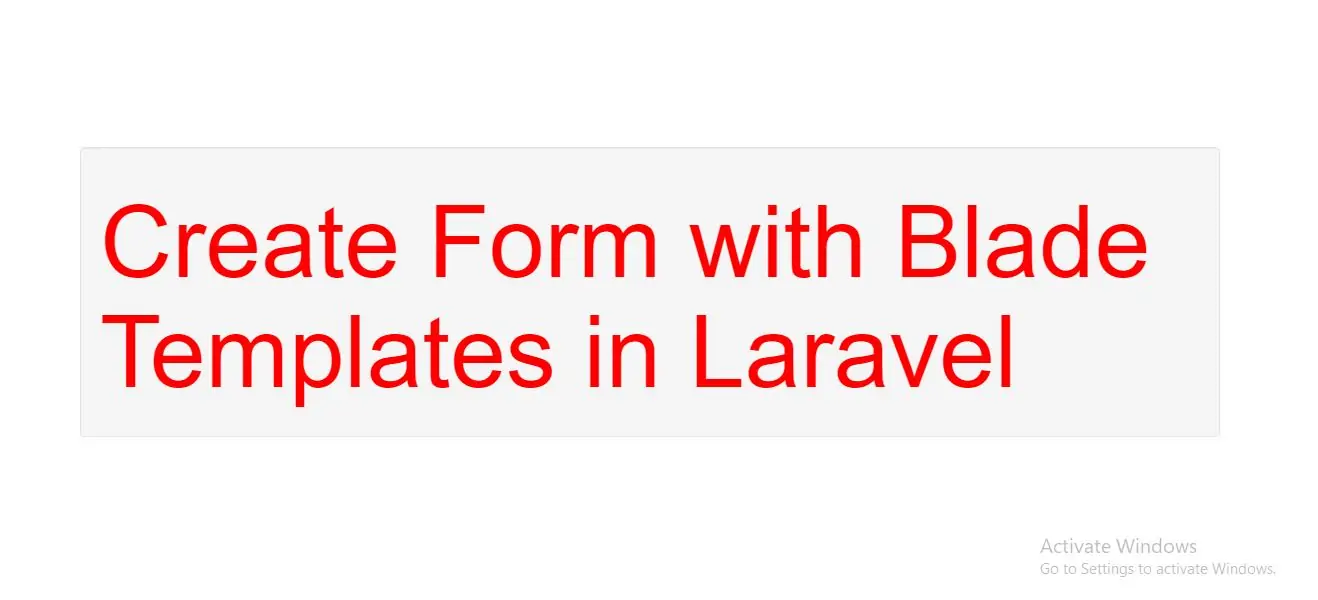
Opening A Form
{{ Form::open(array('url' => 'foo/bar')) }}
//
{{ Form::close() }}
CSRF Field
Anytime you define an HTML form in your application, you should include a hidden CSRF token field in the form so that the CSRF protection middleware can validate the request. You may use the @csrf Blade directive to generate the token field:
<form method="POST" action="/profile">
@csrf
...
</form>
echo Form::token();
Route::post('profile', array('before' => 'csrf', function()
{
//
}));
Method Field
Since HTML forms can't make PUT, PATCH, or DELETE requests, you will need to add a hidden _method field to spoof these HTTP verbs. The @method Blade directive can create this field for you:
<form action="/foo/bar" method="POST">
@method('PUT')
...
</form>
echo Form::open(array('url' => 'foo/bar', 'method' => 'put'))
Validation Errors
The @error directive may be used to quickly check if validation error messages exist for a given attribute. Within an @error directive, you may echo the $message variable to display the error message:
<!-- /resources/views/post/create.blade.php -->
<label for="title">Post Title</label>
<input id="title" type="text" class="@error('title') is-invalid @enderror">
@error('title')
<div class="alert alert-danger">{{ $message }}</div>
@enderror
You may pass the name of a specific error bag as the second parameter to the @error directive to retrieve validation error messages on pages containing multiple forms:
<!-- /resources/views/auth.blade.php -->
<label for="email">Email address</label>
<input id="email" type="email" class="@error('email', 'login') is-invalid @enderror">
@error('email', 'login')
<div class="alert alert-danger">{{ $message }}</div>
@enderror
Form Model Binding:form based on the contents of a model. To do so, use the Form::model method:
echo Form::model($user, array('route' => array('user.update', $user->id)))
Labels
Generating A Label Element
echo Form::label('email', 'E-Mail Address');
Specifying Extra HTML Attributes
echo Form::label('email', 'E-Mail Address', array('class' => 'myclass'));
Text, Text Area, Password & Hidden Fields
Generating A Text Input
echo Form::text('username');
Specifying A Default Value
echo Form::text('email', 'example@gmail.com');
Generating A Password Input
echo Form::password('password');
Generating Other Inputs
echo Form::email($name, $value = null, $attributes = array());
echo Form::file($name, $attributes = array());
Generating A Checkbox Or Radio Input
echo Form::checkbox('name', 'value');
echo Form::radio('name', 'value');
Generating A Checkbox Or Radio Input That Is Checked
echo Form::checkbox('name', 'value', true);
echo Form::radio('name', 'value', true);
Number
Generating A Number Input
echo Form::number('name', 'value');
File Input
Generating A File Input
echo Form::file('image');
Drop-Down Lists
Generating A Drop-Down List
echo Form::select('size', array('L' => 'Large', 'S' => 'Small'));
Generating A Drop-Down List With Selected Default
echo Form::select('size', array('L' => 'Large', 'S' => 'Small'), 'S');
Generating A Grouped List
echo Form::select('animal', array(
'Cats' => array('leopard' => 'Leopard'),
'Dogs' => array('spaniel' => 'Spaniel'),
));
Generating A Drop-Down List With A Range
echo Form::selectRange('number', 10, 20);
Generating A List With Month Names
echo Form::selectMonth('month');
Buttons
Generating A Submit Button
echo Form::submit('Click Me!');
Custom Macros: Registering A Form Macro
Form::macro('myField', function()
{
return '<input type="awesome">';
});
echo Form::myField();